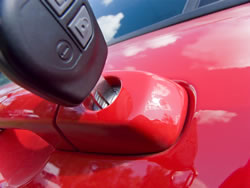Axa Countering Whiplash Fraud
 All insurers alike can agree that whiplash fraud is a serious problem and one that Axa is fully committed to tackling. Axa state the issues surrounding these problems are complex and require significant legislatory reform.
All insurers alike can agree that whiplash fraud is a serious problem and one that Axa is fully committed to tackling. Axa state the issues surrounding these problems are complex and require significant legislatory reform.
Today we share their robust approach to taking the fight to the fraudsters.
Axa's approach
Fraudulent claims for whiplash range from an exaggeration of the extent of any injuries to medical experts, all the way up to entirely fictitious events claiming for accidents that never occurred, or that the claimant was never involved in.
It is important to prioritise and move quickly with a claim for whiplash so you can identify early on if it is potentially false or fraudulent in any way. Pay immediate attention to the cause and circumstances of the accident in relation to the claimant's allegations.
As insurance brokers, it is our duty in this industry to protect our customers by identifying and prosecuting fraud wherever we find it. Unfortunately we live in a claim culture that encourages law-abiding individuals to fabricate or exaggerate claims from a growing number of claims management companies and unscrupulous solicitors ready to exploit the legal system.
It is important to note, the legal system and compensation is in place to help genuine claimants recover from what could be life-changing injuries, it is not there to make a quick quid for a 5 mph bump.
Countering whiplash fraud
Alarmingly, Axa's research has found that one in ten respondents admitted to, or knew someone that had fabricated or exaggerated a claim for whiplash compensation.
Fortunately with the reforms brought in by The Legal Aid, Sentencing and Punishment of Offenders Act 2012 (LASPO) there is now a much more proportionate and cost effective platform for defendants to tackle these unmeritorious (and false) claims for whiplash injuries.
Steps to prevent fraud:
1. Immediate and direct telephone contact with the driver of your vehicle is crucial to understand the merits of the case and to verify that there is a credible argument against the injury having been sustained.
2. Identification of adverse credibility evidence against the claimant through both the insured’s drivers’ testimony contradicting elements of the claimant’s statement of injury and other factors identified through investigation.
3. Engineering documentation supporting the minimal impact - it is not uncommon that an inspection of your vehicle will still be required even if there is no damage claim being presented.
Essentially Axa want brokers to distinguish the evidence of the two parties to force the court to have to prefer the evidence of one of the parties. By highlighting credibility issues with fraudulent claims, the court will steer towards finding in favour of the defendant, or persuade the claimant’s solicitors that the court is unlikely to find the claimant credible and encourage them to drop the claim.
Michael O'Hara, 09 September 2015